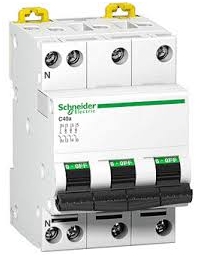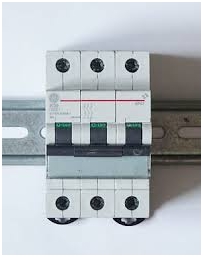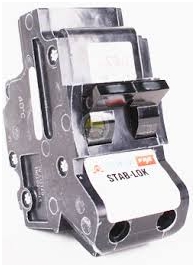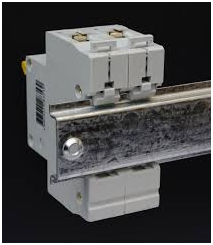As we all have learnt earlier, circuit breakers are generally used to safeguard electrical equipment from voltage spikes.
In this article, one of the member of the community Eric S. will discuss about the different methods that are used to secure low voltage circuit breakers in a typical setting.
You can also send us articles in our boxmail, we will publish it with great pleasure.
Introduction
There are four standard ways of securing low voltage circuit breakers. They are:
- Securing with the help of bolts
- Securing by bolting circuit breakers to bus bar
- Securing by stab locking breakers to bus or any other receptacle connection
- Securing by mounting the breakers on din rail
1. Securing With The Help Of Bolts
Bolted type circuit breakers are known for longer life and better service. These types of circuit breakers are equipped with metal tabs protruding out of the unit that are fastened to the bus bar with the help of metal bolts that have fine threads (not the sheet type). Each metal tab can carry one phase only.
Many people try to repair or replace these kinds of circuit breakers when they are still live. But, I do not think that is a great idea. Any circuit breaker that is working on a voltage greater that 12V should be replaced only after turning the power off.
The reason being, I have seen too many of my colleagues get hurt while working on this kind of circuit breakers when they are still hot.
2. Securing By Bolting Circuit Breakers To Bus Bar
Securing this type of CB’s is typically the same as mentioned above, except that the circuit breaker is directly bolted to the bus bar and the metal tabs popping out of the breaker are connected in conjunction to the terminals running through the bus bar.
In some cases, repairing or replacing such breakers may need to be done so, while it is hot. Because, isolating the entire circuit to work on the breaker may not be possible, as the mounting of such breakers is done by bolting circuit breakers to the bus bar, more or less permanently.
When situations demand that you work on these CB’s while they are still hot, care should be taken that you use appropriate safety measures, safety clothing and double insulated screw drivers. You should also make it a point that there are at least two other technicians with you while you are working on a live breaker so that they can assist you just in case of any mishaps.
3. Securing By Stab Locking Breakers To Bus Or Any Other Receptacle Connection
This kind of circuit breaker is equipped with a plug containing male and female points. This is not directly connected to the bus bar; in fact, it is connected to a receptacle metal which is in turn connected to the bus bar.
These types of breakers are not electrically connected to the bus bar and are generally housed in a casing. You can find this type of mounting of breakers in many households and in small commercial units.
They are the easiest, as far as the replacement of a circuit breaker is concerned.
4. Securing By Mounting The Breakers On Din Rail
In this method of mounting, a din rail is riveted to the enclosed space and the circuit breaker is clipped to it.
Though not as easy as replacing the stab locking circuit breakers, this method of mounting is also relatively easy (as far as replacing circuit breakers is concerned). All you have to do is remove the faulty CB from the railing and clip the new CB to the railing.
Conductors that supply load are normally connected to the breaker with the help of pressure connectors. You can find this type of mounting of breakers in many households and in small commercial units.
Conclusion
In conclusion, no matter what kind of securing method you use for mounting your low voltage circuit breaker, always bear in mind that you should not operate while they are hot.
Also, note that, irrespective of the mounting method, there is always a small shaky movement in the set-up. Hence, there is no need to worry if the circuit breaker in your house is moving a little after you mount it. That is normal!





Securing your circuit breaker is wise decision! There are a few different options that are listed and depending on what kind of breaker you have, you can secure it the right way. Thanks for mentioning not moving the breaker while it is hot, that is a great safety tip!
CAN YOU TELL ME BEST TRAINING INSTITUTE FOR MAINTENANCE OF CIRCUIT BREAKER AND CURRENT TRANSFORMER IN INDIA.
I liked that you pointed out that circuit breakers can be secured to a bus bar. It does seem like a good idea to hire a professional to install that for you. I wouldn’t want to worry about messing something like that up and it could be dangerous to mess up.